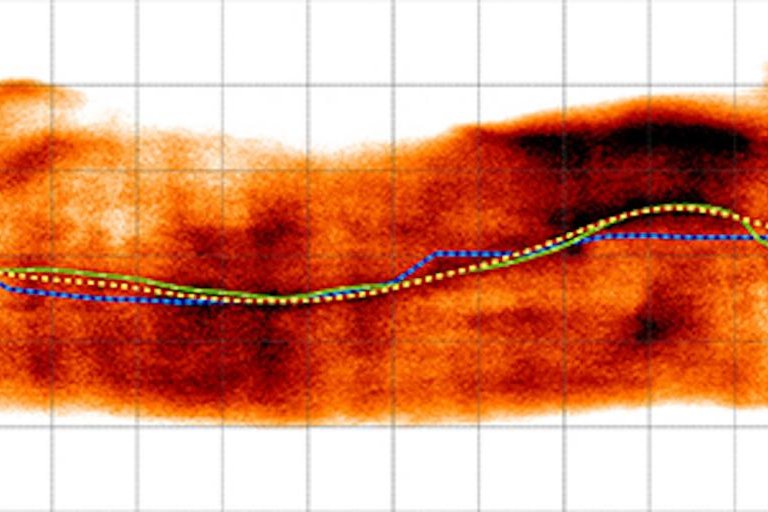Researchers found a ribbon of H3+ along Jupiter's equator, suggesting an interaction between the planet's ionosphere and its magnetic field. Photo by University of Leicester
July 23 (UPI) -- New data from NASA's InfraRed Telescope Facility suggests Jupiter's equatorial magnetic field is relatively simple. The data also suggests the gas giant's ionosphere, between the equator and the poles, is surprisingly complex.
Until now, scientists have mostly focused on the ionosphere near Jupiter's poles. Their observations suggested the ionosphere was relatively uniform. Scientists also thought Jupiter's equator was complex.
The latest findings, published Monday in the journal Nature Astronomy, suggests their assumptions were incorrect.
Using the NSFCam instrument at ITF, scientists were able to identify a weakened ribbon of H3+ emissions near Jupiter's equator. H3+ is an arrangement of hydrogen atoms known as a trihydrogen cation, or protonated molecular hydrogen. The discovery of the unique hydrogen ribbon confirmed the presence of an ionospheric interaction with the planet's magnetic field.
The possibility of such an interaction was first suggested by observations made by NASA's Juno probe.
"The first time we saw the dark ribbon winding its way around Jupiter in our data, we felt sure we were seeing something special at Jupiter," Tom Stallard, an associate professor in planetary astronomy at the University of Leicester, said in a news release. "The result was so startling and yet clear, it took us all by surprise, and we strongly suspected and speculated that the feature was caused by Jupiter's magnetic equator."
Measurement's of Jupiter's magnetic field made by Juno aligned perfectly with the observations of the NSFCam instrument.
"Our observations, along with the recent measurements by Juno spacecraft, have surprised us," Stallard said. "Some of Jupiter's auroral regions were highly complex, and so many earlier models predicted a very complex magnetic equator to match with this, but the magnetic equator is actually shaped much more like that of Earth."
Though Jupiter's magnetic equator appears relatively simple, the observation suggests there is a whole new world of complexity inside the planet's ionosphere waiting to be explored.
Scientists hope continued analysis of the complexity in the ionosphere between the equator and the pole will lead to an improved understanding of Jupiter's many storms, including the Great Cold Spot.















